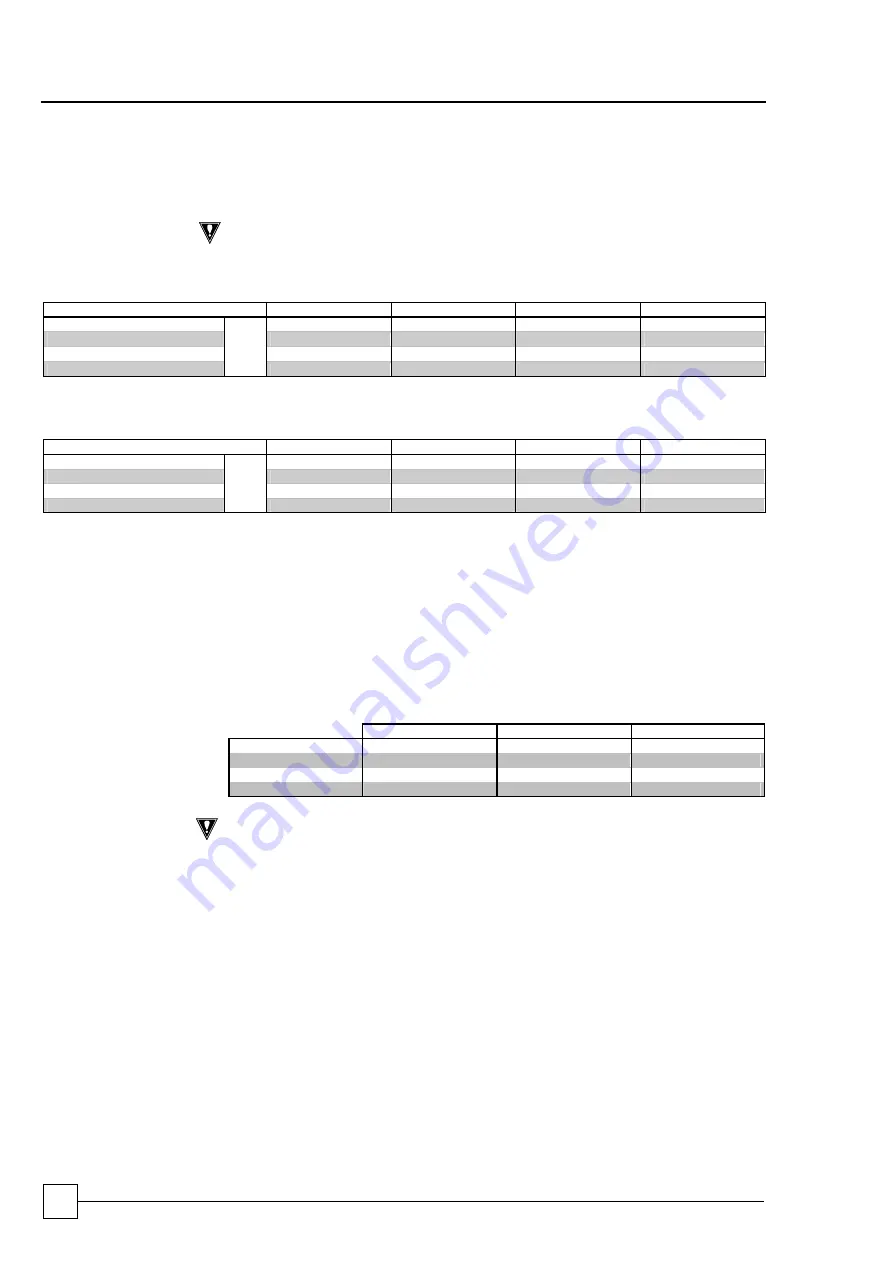
TURBOCHILL Chillers
Chillers
22
Installation Manual : 6703052 05/2008
Installation Data
GLYCOL DATA
For a given percentage of glycol in the system there are correction factors that need to
be applied, the following tables can be used as a guide.
CAUTION
The source data must be at 100% Water for the correction factors to be valid.
Ethylene Glycol Nominal Correction Factors
Glycol in System / Freezing Point ºC
10% / -4°C
20% / -9°C
30% / -15°C
40% / -23°C
Output (kW)
0.98
0.97
0.95
0.93
Compressor Input (kW)
0.99
0.98
0.96
0.95
Water Flow (l/s)
0.99
1.02
1.04
1.07
Pressure Drop (kPa)
x
1.05
1.20
1.38
1.57
Propylene Glycol Nominal Correction Factors
Glycol in System / Freezing Point ºC
10% / -2°C
20% / -6°C
30% / -12°C
40% / -20°C
Output (kW)
0.97
0.95
0.91
0.88
Compressor Input (kW)
0.99
0.98
0.96
0.95
Water Flow (l/s)
0.98
0.97
0.95
0.95
Pressure Drop (kPa)
x
1.08
1.17
1.31
1.45
Example:
At 100% Water:
Output
= 800 kW
Compressor Input
= 250.5 kW
Flow Rate
= 38.2
Pressure Drop
= 37.5 kPa
Ambient =
35°C
Inlet Fluid Temp.
= 7°C
Outlet Fluid Temp.
= 12°C (
5°C
Δ
T
)
To 20% Ethylene Glycol:
100% Water
Multiplier
Corrected Figures
Output (kW)
800.0
x 0.97
776.0 kW
Compressor Input (kW)
250.5
x 0.98
245.5 kW
Water Flow (l/s)
38.2
x 1.02
38.9 l/s
Pressure Drop (kPa)
37.5
x 1.20
45.0 kPa
Waste glycol needs to be handled responsibly, recycled or turned over to professional
personnel for correct disposal. Most anti-freeze manufacturers recommend that used anti-
freeze be collected and disposed according to Local Legislation. Waste glycol should NOT be
drained onto the ground, rainwater drainage system or natural waters.
If the glycol contains heavy metals or other contaminants from gas or oil, the level of hazard
posed by the glycol is increased and could be characterised as hazardous waste.
STEPS IF GLYCOL IS RELEASED/SPILLED
Small spill - soak up with absorbent material.
CAUTION
Large spill - contain spill and pump to suitable container for disposal.







































